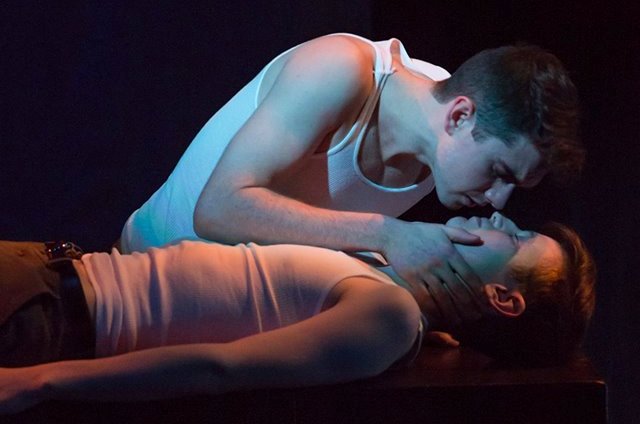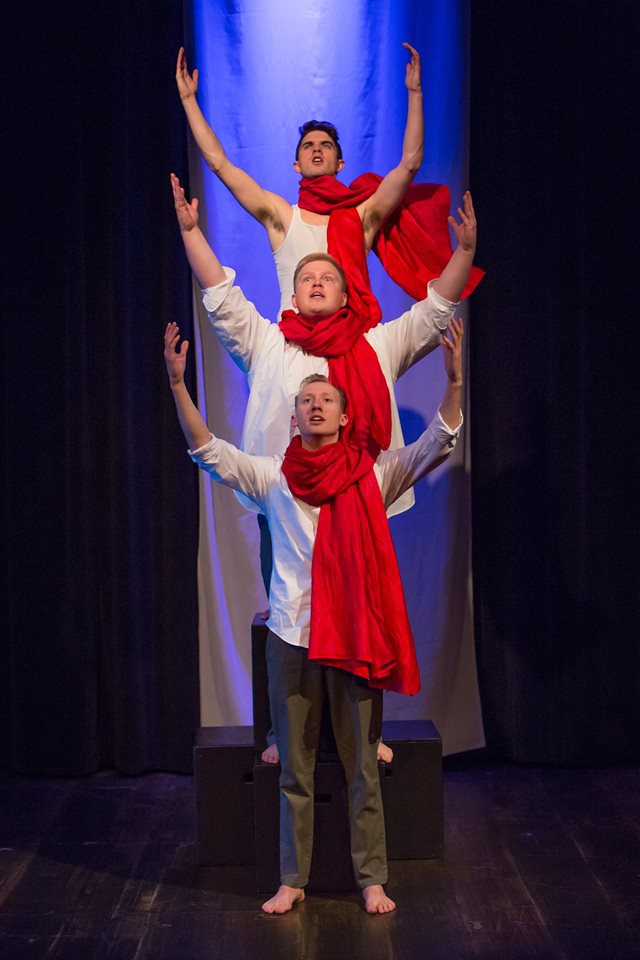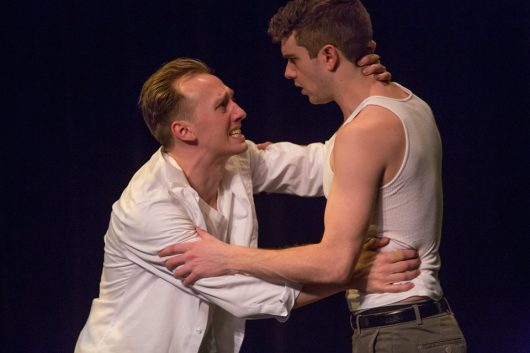REVIEW: Shakespeare’s R&J gives new life to classic romance
Posted on January 20, 2018 By Colin MacLean Entertainment, Front Slider, news, Theatre
 Shakespeare’s R&J, from Edmonton’s adventurous indie-theatre Kill Your Television, is a remount of their successful original, which won a Sterling Award for Outstanding Independent Production. The play is billed as a “re-imagining” of the original by director Kevin Sutley, and has been retooled several times by the playwright Joe Calarco – who is credited in the program as an “adapter.”
Shakespeare’s R&J, from Edmonton’s adventurous indie-theatre Kill Your Television, is a remount of their successful original, which won a Sterling Award for Outstanding Independent Production. The play is billed as a “re-imagining” of the original by director Kevin Sutley, and has been retooled several times by the playwright Joe Calarco – who is credited in the program as an “adapter.”
On some fronts, R&J calls for re-imagining. When it premiered off-Broadway in 1997, attitudes to same-sex liaisons and the thought of a marriage between two men were still deemed scandalous. Since then, reactions to the play have been something of a litmus for society’s changing attitudes. The current state of wider acceptance makes viewing of the work a different experience than it was 20 years ago. Also, the setting of the play, in a private school with its blazer uniforms and unbending attitudes toward dogma and tradition, has certainly become familiar if only from an endless stream of movies and plays (The Boys of St. Vincent, Spring Awakening, The Dead Poet’s Society).
 In light of the disclosures of the Truth and Reconciliation Commission we will never be able to see that school system quite the same way again.
In light of the disclosures of the Truth and Reconciliation Commission we will never be able to see that school system quite the same way again.
In Shakespeare’s R&J – at the Roxy on Gateway Theatre until Jan. 28 – the boys spend their days conjugating Latin verbs and Catholic credo. But after the last bell sounds, four impulsive young students, driven by hormones, a life of repression and a sense of forbidden discovery, thumb through a copy of Romeo and Juliet, savouring the dirty bits (“Draw thy tool … heh! heh!”) and the sword fighting. Showing off, they humorously overact. But slowly they are drawn into Shakespeare’s 500 year old fevered dream of adolescent love and death. Romeo, the nurse, Mercutio, Friar Lawrence and others are kind of fun – but sooner or later someone must assume the role of Juliet. It is here that the play’s sense of awe, discovery and trespassing into the forbidden turns into something beyond schoolboy fun – and Sutley’s ingenious production begins to take shape.
By using the Bard’s words, juxtaposed with the rigid intonation of the Latin and prayers in class, writer and director conspire to give the students a new, flavourful Elizabethan language to frame their emotional liberation. The playwright even throws in a bit of the Sonnets and a snippet of A Midsummer Night’s Dream. Young love unfolds on two levels as long stifled emotions blossom and the two young men discover a passion for each other. There is even a moment where the other actors, seeing what is going on, try to interrupt the flow, but by then the current is too strong.
The association of the two parallel stories, of course, is what makes the play interesting and worth doing – although there is the lingering thought at the end that the Bard doesn’t need any help.
 Because their lives are unfolding on two levels (a play within a play) the demands on the young actors are considerable but they are certainly up to it. Since the work is mostly cribbed Shakespeare the secondary story is told through the (often hilarious) reactions of the performers. Oscar Derkx (Peter and the Starcatcher) and Luc Tellier (Shakespeare in Love) are excellent as they develop considerable sexual tension between them. The entire large cast of Shakespeare’s original is played with skill by Braydon Dowler-Coltman and Corben Kushneryk. The text is delivered with considerable intelligence in a clear and nuanced manner.
Because their lives are unfolding on two levels (a play within a play) the demands on the young actors are considerable but they are certainly up to it. Since the work is mostly cribbed Shakespeare the secondary story is told through the (often hilarious) reactions of the performers. Oscar Derkx (Peter and the Starcatcher) and Luc Tellier (Shakespeare in Love) are excellent as they develop considerable sexual tension between them. The entire large cast of Shakespeare’s original is played with skill by Braydon Dowler-Coltman and Corben Kushneryk. The text is delivered with considerable intelligence in a clear and nuanced manner.
With only four actors, the crowd scenes require the use of the audience’s imagination. By having actors play several roles (and switching instantaneously from one role to another), Sutley ingeniously suggests crowd scenes even when you can’t see a crowd. April Viczko’s simple set is composed of four black cubes, some hanging swaths and a remarkably useful long red drape that Sutley ingeniously turns into everything from Juliet’s ring to the Apothecary’s potion, and occasionally, by draping the entire cast in it, a multi-headed street scene. It is particularly dramatic in fight scenes where it becomes swords and when a character is skewered, there is a flash of red and the whole thing disappears.
Apparently in the original production, the graphic homoerotic love scenes between two male actors generated the occasional walkout. Not so here in this challenging, fresh and lively observation of adolescent passion, the human potential of love regardless of gender and the transporting power of words.











